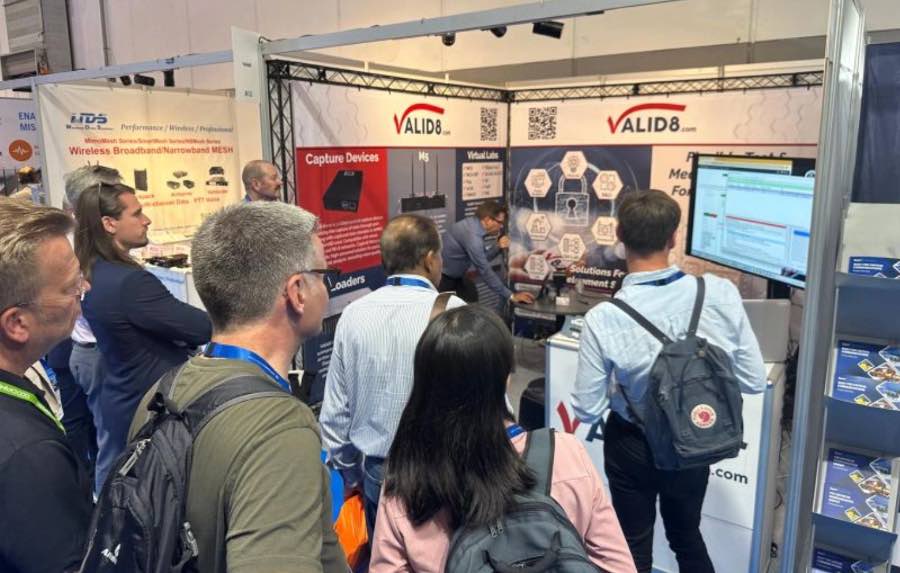
Last week, industry experts from critical communications gathered in Brussels for the 2025 Critical Communications World conference. While the event focused on a variety of important technology areas, such as IoT and satellite, LMR (Tetra, P25, etc.) and MCX IWF were important areas of discussion.
At Valid8’s booth A12, we had the opportunity to speak with a variety of stakeholders across industries and hear about their experiences.
The good news for organizations in critical communication is the variety of connectivity options available when it comes to modern networks interoperating with legacy networks. Some IWF examples include Native mode, API mode, and ISI mode. No matter the method, each comes with benefits and challenges. Some are highlighted below.
Native mode: This mode involves direct integration of the TETRA Switching and Management Infrastructure (SwMI) with the InterWorking Function (IWF). Native modes tend to be vendor-specific, and not all TETRA systems support native IWF. Taking advantage of native mode may require significant upgrades or changes to existing infrastructure, and there could be issues with response time.
API mode: In this mode, IWF communicates with the TETRA system via a vendor-specific or standardized API. API mode could have issues with compatibility, latency, and potential security concerns with exposed APIs. Depending on the API, the mode may not support all mission-critical features (e.g., call queuing, priority handling).
ISI Mode: Uses the standardized TETRA ISI (ETSI EN 300 392-3) to connect the IWF to the TETRA network. The Inter-System Interface (ISI) connects the systems and enables interoperability. ISI is standards-based and vendor-neutral, supporting roaming and inter-network group calls.
For public safety, ISI has shown itself to be more reliable and offers a faster response time compared to the Native or API options. For organizations that do not want to be tied to propriety solutions, ISI offers an open standard that delivers flexibility to customers and users for connectivity.
During Critical Communications World, we showed the ISI IWF as part of Valid8 MCX IWF Virtual Labs. Virtual Labs enable a self-contained, end-to-end MCX IWF testing environment including traffic generators for TETRA ISI, P25 ISSI/CSSI, and GSM-R FRMCS. The innovative virtual emulation solution has applications for testing, demonstrations, training, and compliance.
Valid8’s demonstration, and others at the event, illustrated that ISI is beyond the concept phase and is a reality.
As industries make the transition from traditional narrow-band data transmission to broadband for mission critical communications, it becomes vital that legacy technologies integrate seamlessly with newer technologies. TETRA-MCX interworking (IWF) is essential to ensuring the reliability of communication across voice and data.
Valid8 Virtual labs have applications across the business, including:
Testing: Simulated environment with test cases to test message compliance
Education/Training: Network running end-to-end with live message traces and quizzes
Development: Disabling an emulated entity and the ability to connect your DUT entity for use as a reference
Sales: Valid8 Virtual Lab can be used as a 3rd party reference to demonstrate product features and capabilities
Deployment: The steps in deployment can be streamlined, enabling efficient progress while waiting for other equipment or activities to complete
Support: Call-flow behavior can be brought back from the field to Virtual Labs for troubleshooting
We were excited to participate in this year’s Critical Communications World and look forward to next year’s event in London.